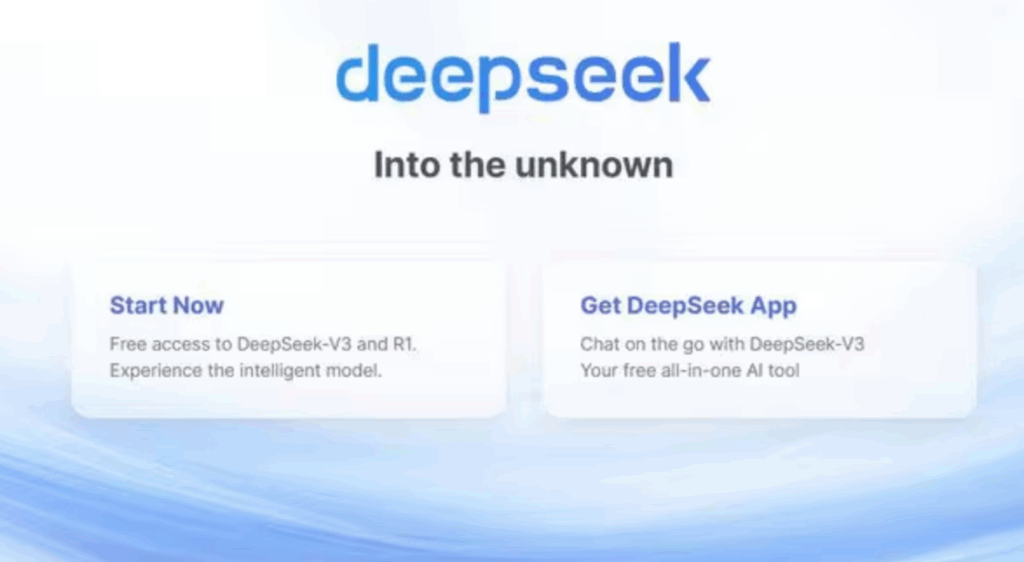DeepSeek V3.1 Model Launches: 128K Context, 685B Parameters & Major Upgrades
Chinese artificial intelligence pioneer DeepSeek is rewriting the playbook for large language models with the launch of its V3.1 flagship model. Without flashy social media campaigns but with keen anticipation in the AI community, DeepSeek has raised the stakes: expanding to a massive 128,000-token context window and scaling parameter count to a staggering 685 billion.

Let’s dive into the latest breakthroughs, what makes DeepSeek V3.1 unique, and why it’s already catching the eye of AI developers and researchers worldwide.
What’s New in DeepSeek V3.1? Key Upgrades Explained
Unprecedented 128,000-Token Context Window
One of DeepSeek V3.1’s headline features is its expanded context length—now supporting up to 128,000 tokens. How big is that? It’s enough to process texts equivalent to a full 300–400 page book in a single pass. This overhaul means:
-
Long-form content creation becomes seamless
-
Technical document parsing and analysis improve dramatically
-
Multi-turn conversations stay coherent over extended exchanges
The company’s WeChat group confirmed this context window had already existed internally in V3, but it’s now standard in all V3.1 user interfaces.
Massive 685 Billion Parameters with MoE Tech
Powering V3.1 under the hood is an eye-popping 685 billion parameter mixture-of-experts (MoE) architecture. With MoE, only 37 billion parameters are activated per token, offering:
-
Efficient resource usage (lower cost per inference)
-
Smart routing of model operations for optimized responses
-
Significant improvements in specific skill domains
MoE enables DeepSeek to scale while maintaining versatility for wide-ranging natural language and coding tasks.
Expanded Format and Developer Flexibility
V3.1 supports leading precision formats—including BF16, FP8, and F32—making deployment easy for a wide range of hardware and specialized applications. Developers can tap into DeepSeek via API or download the model weights directly from Hugging Face, all under the open MIT license.
Benchmark Scores: V3.1 vs Industry Leaders
Record-Setting Coding Test Results
Early third-party benchmarks place DeepSeek V3.1 among the top open-source models for programming:
-
Aider Coding Test: 71.6% (better than Anthropic’s Claude Opus 4)
-
Praised as best-in-class for open-source coding, rivaling proprietary frontrunners
Math & Reasoning Performance
-
V3.1 shows notable improvement in mathematical problem-solving and logic-based tasks.
-
Some users, however, report that reasoning skills are only comparable to DeepSeek’s earlier R1-0528—not a quantum leap, but a solid, unified evolution.
MoE Architecture: Power and Efficiency Combined
DeepSeek’s Mixture-of-Experts system is central to V3.1’s design:
-
Selective Activation: Each input token triggers select “experts,” cutting unnecessary computation.
-
Lower GPU Demands: Only 37B of 685B params are active at any moment, yielding better performance on less hardware.
-
Tailored Precision: Model supports BF16, FP8, and F32, making it easy to adapt to different chips and workloads.
API, Open Source & Developer Access
DeepSeek V3.1 is available for:
-
Direct API use—enabling rapid integration into apps, agents, and workflows.
-
Community download via Hugging Face, thanks to the permissive MIT open-source license.
This blend of accessibility and power appeals to open-source developers and enterprises looking to customize top-tier AI without vendor lock-in.
DeepSeek’s Strategic Pivot: One Hybrid Model for Everything
With V3.1’s debut, DeepSeek has dropped all references to its R1 model in the chatbot—signaling a move toward unifying reasoning and general workloads in a single architecture. Rather than juggling multiple specialized models, DeepSeek now channels its prowess into one flagship hybrid, making performance consistent and maintenance simpler for users.
The R2 Delay: Why DeepSeek V3.1 Is the New Flagship
The community had expected DeepSeek’s big leap would be the long-promised R2, a model focused on advanced reasoning. However, R2’s release was shelved due to significant challenges:
Chip Supply and Training Hurdles
-
Pressure from Chinese authorities led DeepSeek to attempt training on Huawei Ascend AI chips, aiming for self-sufficiency and less reliance on Nvidia.
-
Despite support from Huawei engineers, Ascend chips suffered from compatibility and performance bottlenecks; ultimately, DeepSeek returned to Nvidia H800 GPUs for training, combining Ascend for inference only.
-
Training V3 on Nvidia racked up costs above $5.6 million and 2.8 million GPU hours—a staggering infrastructure outlay.
-
Prolonged time for data labeling and hybrid hardware setups caused additional R2 delays.
Intense Competition
Meanwhile, Alibaba’s Qwen3 and other Chinese AI leaders have marched ahead with efficient, competitive models, underscoring the infrastructure and supply chain headwinds for even well-resourced AI outfits in China.
Model Availability, Licensing, and Use Cases
DeepSeek V3.1 is available to the public via:
-
API integration—for businesses, researchers, and AI enthusiasts.
-
Open-source download—enables custom research, model finetuning, and private deployments.
-
Licensing is under MIT, supporting wide commercial and personal use with minimal restriction.
Applications
-
Long-form Copywriting: Process, summarize, or create book-length datasets
-
Technical Documentation and Code Assistance: Top-tier coding performance for development teams
-
Chatbots and Virtual Agents: Multi-turn, coherent conversations for business and consumer apps
-
Education, Research, and Content Generation: Access to a smart, adaptable knowledge worker
User Impressions and Community Insights
Early adopters share that V3.1 manages lengthy input and output with impressive stability—an asset for anyone building advanced AI solutions. Some developers highlight the combination of open licensing, easy access, and competitive coding skills as game-changing for open-source and enterprise projects alike.
While a handful still await breakthrough improvements in abstract reasoning, the consensus is clear: DeepSeek V3.1 is a new open-source heavyweight, built for scale, versatility, and sustained innovation.
DeepSeek V3.1 Marks China’s Next AI Leap
With DeepSeek V3.1, the company cements its place among global AI heavyweights, delivering a blend of scale, flexibility, and developer-friendly accessibility. The expanded 128K context window, hybrid MoE architecture, open-source commitment, and class-leading benchmarks raise the bar for what large language models can do—whether you’re coding, creating content, or running enterprise-grade virtual assistants.
As China’s AI ecosystem continues to evolve amid hardware and policy headwinds, DeepSeek’s resilient push for innovation keeps it firmly on the map. For now, V3.1 is the model to watch—whatever comes next.




